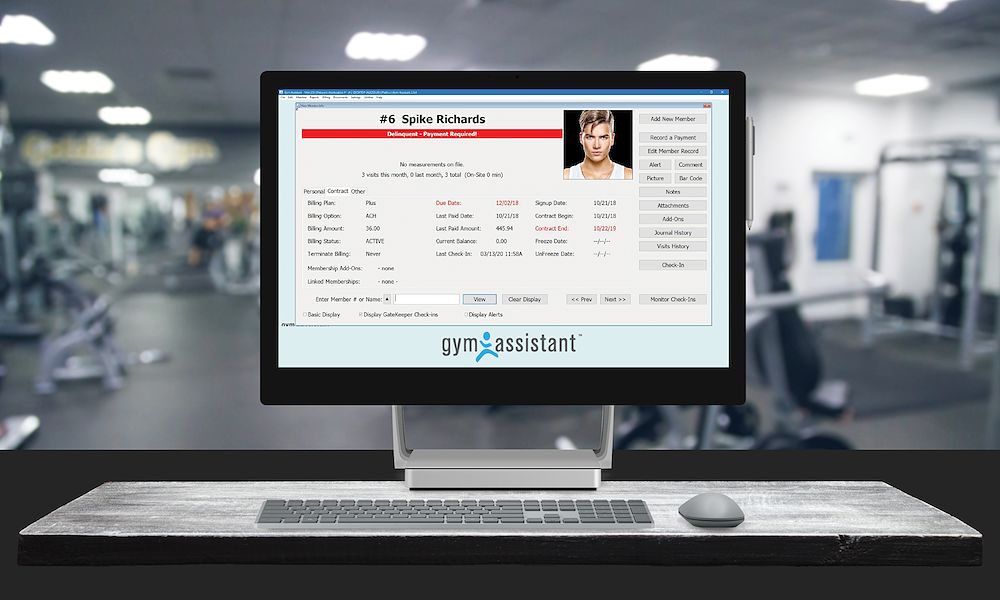How to Open a Gym in Minnesota: Building a Fitness Hub in the Land of 10,000 Lakes
Minnesota’s vibrant communities and active lifestyles make it a prime location to open a gym. From the bustling Twin Cities to the scenic small towns, fitness enthusiasts are looking for quality workout spaces that align with their goals. Opening a gym in Minnesota, however, requires careful planning, market research, and strategic investments. This guide will walk you through the key steps to establish a successful gym in the North Star State, while also highlighting how gym management software like Gym Assistant can transform your operations and member experience.
Understanding Minnesota’s Fitness Landscape
Minnesotans are known for their love of outdoor activities and wellness-focused lifestyles. This creates a fertile ground for gyms that cater to diverse fitness needs, from traditional weightlifting gyms to boutique studios offering yoga, Pilates, or high-intensity interval training (HIIT).
Before diving into the logistics, it’s essential to identify the type of gym that resonates with your target audience. For example:
- Urban areas like Minneapolis and St. Paul might thrive with boutique studios or high-tech fitness centers.
- Suburban regions may prefer family-oriented gyms with childcare services.
- Rural areas might benefit from multi-purpose gyms offering a mix of fitness and community activities.
Step 1: Market Research
Understanding your local fitness market is critical. Research the fitness habits and preferences of your target audience. Consider the following:
- Who are your competitors? What services and amenities do they offer, and how can you differentiate your gym?
- What are the local demographics? Is your audience primarily young professionals, families, or retirees?
- What type of fitness services are in demand? Are people looking for personal training, group classes, or open gym access?
Use surveys, focus groups, and online tools to gather insights that will shape your gym’s offerings.
Step 2: Create a Unique Gym Concept
To stand out in Minnesota’s competitive fitness market, your gym needs a unique identity. Consider these differentiators:
- Specialized Offerings: Cater to specific fitness trends like functional training, wellness-focused yoga, or beginner-friendly weightlifting.
- Eco-Friendly Practices: Appeal to environmentally conscious Minnesotans by incorporating energy-efficient equipment and sustainable practices.
- Community Integration: Offer events, workshops, or partnerships with local businesses to foster a sense of belonging.
Step 3: Draft a Comprehensive Business Plan
Your business plan will guide your decisions and help secure funding. Include the following sections:
- Executive Summary: Your gym’s vision, mission, and goals.
- Market Analysis: Insights into your target market and competitors.
- Financial Plan: Startup costs, projected revenue, and profitability timeline.
- Service Offerings: Define your services, such as memberships, personal training, and classes.
- Marketing Strategy: Outline how you’ll attract and retain members.
- Operational Plan: Detail staff roles, hours of operation, and equipment needs.
Step 4: Secure a Strategic Location
Choosing the right location is critical to your gym’s success. Look for spaces that are:
- Highly visible and accessible.
- Near residential neighborhoods or business hubs.
- Large enough to accommodate your equipment, classes, and amenities.
In Minnesota, proximity to outdoor recreation areas or bike trails can also be a draw for fitness enthusiasts.
Step 5: Get the Necessary Permits and Licenses
Before opening your gym, ensure compliance with Minnesota’s legal requirements:
- Business Registration: Register your business with the Minnesota Secretary of State.
- Zoning Approval: Confirm your gym complies with local zoning laws.
- Health and Safety Compliance: Adhere to Minnesota health and safety regulations for fitness facilities.
- Liability Insurance: Protect your gym from potential legal claims related to injuries or accidents.
Step 6: Design Your Gym and Invest in Equipment
Create a welcoming space that aligns with your gym’s concept. Key considerations include:
- Equipment: Invest in durable, high-quality machines, free weights, and specialty items for classes or training.
- Layout: Ensure a logical flow between workout zones, with separate areas for cardio, strength, and functional training.
- Amenities: Locker rooms, showers, and a comfortable reception area are essential.
Minnesota’s weather makes indoor amenities even more critical, as members will rely on your gym year-round.
Step 7: Build a Talented Team
Your staff will define the member experience. Hire skilled, certified trainers, engaging class instructors, and friendly front-desk personnel. Certifications from organizations like NASM, ACE, or ISSA are a must for fitness professionals.
Minnesota’s strong community spirit means your team should also be approachable and invested in member success.
Step 8: Implement Cutting-Edge Gym Software
Efficient operations are the backbone of a successful gym, and this is where gym management software comes into play. Here’s how Gym Assistant can help:
- Membership Management: Easily track sign-ups, renewals, and attendance, ensuring every member receives a personalized experience.
- Automated Billing: Eliminate payment hassles with automated invoicing and reminders.
- Analytics and Insights: Monitor trends in attendance, member retention, and revenue to make data-driven decisions.
- Member Engagement: Keep members informed with automated notifications about promotions, events, and updates.
Implementing gym management software not only saves time but also enhances member satisfaction, giving your gym a competitive edge.
Step 9: Market Your Gym Effectively
Once your gym is ready, it’s time to attract members. Tailor your marketing efforts to Minnesota’s active and community-oriented audience:
- Social Media Campaigns: Share updates, success stories, and promotions on platforms like Instagram and Facebook.
- Local Partnerships: Collaborate with nearby health and wellness businesses to cross-promote services.
- Community Events: Host open houses, fitness challenges, or charity fundraisers to engage with your community.
- Referral Programs: Encourage current members to refer friends with incentives like discounts or free classes.
Step 10: Focus on Member Retention and Growth
Opening day is just the start. To ensure long-term success:
- Regularly collect feedback from members and staff.
- Update equipment and class offerings based on member needs.
- Foster a supportive and inclusive environment where members feel valued.
Conclusion
Opening a gym in Minnesota is an opportunity to create a thriving fitness hub while contributing to the health and well-being of your community. By carefully planning your business, choosing a strategic location, and leveraging powerful gym management software like Gym Assistant, you can set your gym apart and build a loyal member base.
With the right tools and strategies, your gym will not only meet the fitness needs of your community but also grow into a sustainable and successful business.
At Gym Assistant we specialise in membership management software that is really easy to use – visit https://www.gymassistant.com/ for more!



